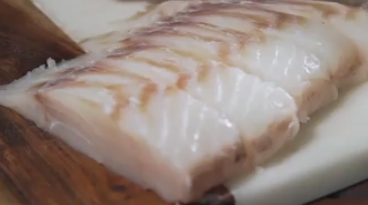Minced Alaska Pollock (Gadus chalcogrammus Pallas 1814) is a food product derived from a type of cod that is fished in the Gulf of Alaska and the northern part of the Pacific Ocean.

- Minced. The term "minced" refers to finely chopped fish flesh. This mincing process makes the fish suitable for various culinary uses, such as fillings or ingredients in processed products.
- Alaska Pollock. Alaska Pollock is a species of fish commonly harvested in the cold waters of the Northern Pacific Ocean, especially near Alaska. It is known for its white, delicate, and slightly sweet flesh and is a popular source of low-fat protein.
Let's go into detail about the fishing and processing of this fish.
Harvesting and Processing of Alaska Pollock
Habitat: Alaska Pollock is primarily found in the Bering Sea and the Gulf of Alaska. These fish live in deep, clean, and cold waters, at depths of 70-300 meters, and never swim into fresh waters.
Diet: They feed on plankton, shrimp, shellfish, other fish, and marine organisms. Alaska Pollock is also a food source for larger fish species, birds, and marine mammals.
Commercial Significance: It represents the largest commercial fishery in the Bering Sea by volume, accounting for 60% of the total biomass
Fishing Method: Alaska Pollock is harvested using trawl vessels. Trawl fishing involves a large, funnel-shaped net towed behind a large fishing vessel. These trawlers use sophisticated devices to detect and identify fish underwater, allowing them to avoid catching non-targeted species and to tow the gear effectively in relation to the fish and the ocean floor.
Processing: After being harvested, Alaska Pollock is processed in various facilities, either at sea or onshore. The processing methods include creating mince, mince blocks, fillets blocks, deep-skinned fillet blocks, surimi, and H&G (headed and gutted).
Product Versatility: Alaska Pollock has lean, mild, and tender meat, making it one of the most versatile Alaska whitefish varieties. Its products, such as H&G fish, surimi, and roe, are exported to various markets, including Ukraine.
Sustainability and Management: The fishing gear is operated in a clean manner to minimize environmental impact. Processors aim to extract maximum value from the harvest and minimize waste. The management of Alaska’s whitefish fisheries is science-based, taking a precautionary and conservative approach to ensure the sustainability of seafood stocks and the environment.
Availability: Frozen Alaska Pollock products are available to consumers all year round.
Raw Materials Used in the Production
Minced Alaska Pollock is primarily produced from Alaska Pollock, a whitefish harvested from the Bering Sea and the Gulf of Alaska
Functions of Raw Materials
Alaska Pollock - Provides the fish meat that is minced to produce the final product
Production Process
- Fishing - Alaska Pollock is fished in the cold waters of the Bering Sea and the Gulf of Alaska
- Cleaning - The fish is cleaned, and its inedible parts are removed
- Mincing - The fish meat is minced to achieve a uniform texture
- Freezing - The minced product is frozen to preserve its freshness
![]() Minced Alaska Pollock
Minced Alaska Pollock 


